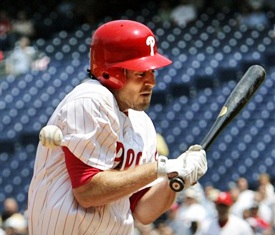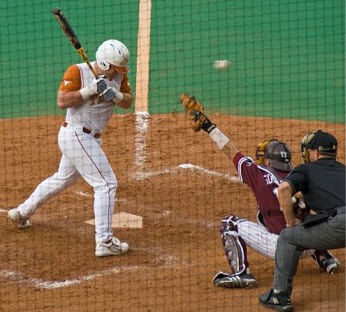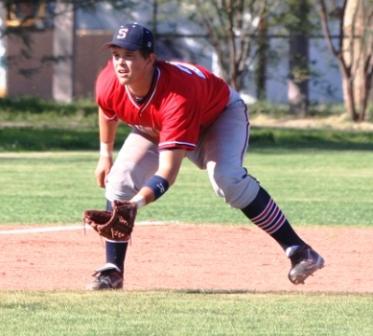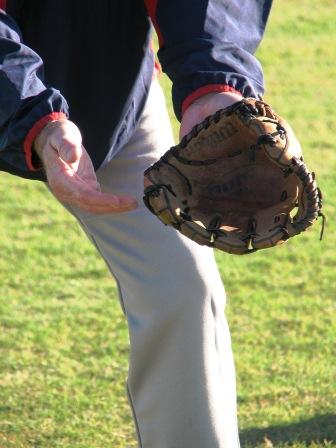The Olympics are magical and inspiring. We watch with amazement the unparalleled feats of human agility, grace, strength, and beauty. We know that those athletes live in a different stratosphere from our world, but what do our children think when they see these phenomenal human beings being cheered by the world, receiving medals and thunderous applause, only to get frustrated when they can’t perform like that in their own sports?
As an anxiety therapist who works with children struggling with sports performance and perfectionism—there is so much our kids can learn about their own lives from the Olympics. Our children can wish for the super-human talent, the near perfect skills—those may be out of reach—but what is absolutely in your child’s grasp, where the level playing field truly lies, is in the mindset of an Olympian.
That mindset is the gateway to their great success.
Are Olympians immune to thoughts of doubt, dread, self-criticism, pressure, and perfectionism? No, these superstars have the same thoughts that we hear in our mini-vans driving our own kids home from sports, and that I hear from kids in my office each week. The difference between the giants and mere mortals is not the thoughts; the difference is what professional athletes train themselves to do with these thoughts. In sports, managing the mind is as important as managing the body. Practicing mind-management yields what United States figure skater Jeremy Abbott describes as “mental toughness.” I think of it as mental agility—being flexible in your mind to put your focus where you need it most.
It is just that toughness that allows Olympic athletes to tune out the billions of admiring viewers and the pressure of representing their country to the world, and keep eagle-eye focused on the task at hand. Cultivating the mindset that allows that focus is a true feat that athletes of all ability levels can strive for—and achieve. Here are eight ideas to get your child started:
1. Don’t think success or failure, think growth: Psychologist Carol Dweck distinguishes between a fixed mindset (focused on proving oneself constantly—each moment proving worth or lack thereof) versus a growth mindset (focused on improving, with the understanding that improvement is constantly underway through practice and even mistakes). Successful Olympians have a growth mindset. If you notice, there is a lot of similarity between the way they respond in those on-the-spot interviews whether they’ve just set a world record, a personal best, or missed the mark: they stay close to the specifics of their performance. They focus on what they were working on form-wise, strategy-wise, or their technique. They understand that moment was one data point in an ongoing (wonderful) work in progress. Teach your child to focus on the big picture of improving, not over-interpreting the importance of any one game or meet. This way he can focus on his game, rather than getting derailed by the constant pressure of proving himself with every move.
2. Think trends and outliers: We all prefer to succeed; we don’t love losing. When our favorite figure skater falls (though as we saw in the men’s figure skating, you can still win gold!), we know that the falls are an exception—they fall outside the “trend” line of what is typical for a person’s performance. Help your child distinguish between what is typical for her and what is rare, or an exception. She may be able to learn from her mistakes or outliers, but shouldn’t assume or conclude that these low moments are somehow the truer marker of her ability. A bonus: Keeping the meaning of these outliers small is exactly what allows athletes to recover from them quickly, without missing a beat.
3. Don’t fall for the trap door trick of losing talent: When kids understand about trends and outliers they are less likely to fall for what I call the “trap door trick of losing talent or ability.” Inevitably when children mess up, they don’t look at the specific cause, they go global: I’m stupid, I stink, I’m an awful player. It’s as if a trap door opens up underneath them and all the talent and ability they had before the mistake goes right down the shoot. Ask them what really changed: Did they lose all of their talent, or did they just make a mistake or struggle with this one instance? Ask them if the pros lose all of their talent or ability when they mess up. Talk with them about what athletes say in those on-the-spot interviews—they don’t say something global like: “I totally blew it!,” they focus on the details: “I got a slow start out of the gate,” or, “I didn’t keep my feet tucked in the jumps”—essentially their reaction to a mistake reads like a to-do list for their next practice; so it can, and should, be for your child.
4. The smartest move: Turn off your head: One of the best pieces of advice I’ve heard about focus in sports came years ago from Olympic figure skater turned sports commentator, Scott Hamilton. He describes how when you get out on the ice, you have to turn off your head, you can’t focus on thinking, remembering every step, every move, every instruction, you just have to turn off your brain and in his words, “skate stupid.” If we tried to ride a bike by telling ourselves exactly what each foot should do, we’d fall for sure; we need to not interfere with what has become—through practice—automatic for us. When kids are thinking about what they’re doing on the court or the field, they may be overthinking their technique, but likely they are thinking: What are other people thinking of me right now? Am I playing well enough? You see it in their face—they’re analyzing: doing the post-game recap instead of playing. Playing is playing, analyzing is analyzing—there’s a time and place for each, help your child keep them separate. Help them find their way to get into the flow of the game, turn off their head, don’t over think, play “stupid”—it’s the best way to play smart.
5. Practice is for everyone, even the pros: We know that Olympians devote every minute of their lives to training: they eat, breathe and sleep their sport. Many kids want to just be “great” at their sport but don’t want to practice—they just want to be there. They may believe that that their heroes don’t have to practice (or don’t realize how much!), that they are just naturally great, or once they’ve achieved a certain greatness—it’s permanent. Ask your child how many hours she thinks professional athletes train each week, and why. Professional athletes train at least 40 hours a week. Wait—but they are professionals—why do they need to keep practicing? Because ability is about improving your skills—goodness or even greatness is not an endpoint that you achieve and you have arrived. As masters know, their work is never done. Encourage your child to track his progress in specific areas every few practices so he can see the benefit it provides.
6. Look to your heroes: When an Olympian has had a tough run, he looks to his coaches and other trusted advisors such as parents or teammates for their input. It’s not a weakness to get help, seeking the wisdom of others builds a broader base of strength. Coaches can see things that we can’t see, and know things that we don’t know. To help your child recover from a disappointing day on the field, have him identify his dream team of consultants—favorite coaches, athletes, a grandparent perhaps and run his day past his board. He can imagine (in his mind) what advice they have for how to accurately interpret what that disappointment really means and what he can do about it. He might imagine too what his dream team does when they experience disappointment. Finally, he can also learn to be proactive and ask his coach for additional pointers.
7. Find a coaching voice that you like (and treat yourself that way, too): Children are often very self-critical and hard on themselves; to help them see how unhelpful that is, it may be easier to do that from a distance. Ask them which coaches they thought were best in the Olympics—or in general in their experience—ones who get angry and yell when you make a mistake, or ones who stay calm and show you exactly what to do to improve your game? Next, bring it back home: Ask your child how she can be that coach for herself—what does she want to be saying to herself in her head when she’s going into a game? What does she want to be hearing in her head if she has a mis-step?
The Sochi Olympics will be over soon, but the lessons you can teach your child from them can be a springboard to a strong mindset that will serve your child for a lifetime. Practice, perseverance and physical training are essential, but not the whole picture, in the words of figure skater Jeremy Abbott: “Once you’re out there, it’s all about the mental game.”
Source: http://www.psychologytoday.com/blog/worry-wise/201402/teach-your-child-think-olympic-athlete
Are Olympians immune to thoughts of doubt, dread, self-criticism, pressure, and perfectionism? No, these superstars have the same thoughts that we hear in our mini-vans driving our own kids home from sports, and that I hear from kids in my office each week. The difference between the giants and mere mortals is not the thoughts; the difference is what professional athletes train themselves to do with these thoughts. In sports, managing the mind is as important as managing the body. Practicing mind-management yields what United States figure skater Jeremy Abbott describes as “mental toughness.” I think of it as mental agility—being flexible in your mind to put your focus where you need it most.
It is just that toughness that allows Olympic athletes to tune out the billions of admiring viewers and the pressure of representing their country to the world, and keep eagle-eye focused on the task at hand. Cultivating the mindset that allows that focus is a true feat that athletes of all ability levels can strive for—and achieve. Here are eight ideas to get your child started:
1. Don’t think success or failure, think growth: Psychologist Carol Dweck distinguishes between a fixed mindset (focused on proving oneself constantly—each moment proving worth or lack thereof) versus a growth mindset (focused on improving, with the understanding that improvement is constantly underway through practice and even mistakes). Successful Olympians have a growth mindset. If you notice, there is a lot of similarity between the way they respond in those on-the-spot interviews whether they’ve just set a world record, a personal best, or missed the mark: they stay close to the specifics of their performance. They focus on what they were working on form-wise, strategy-wise, or their technique. They understand that moment was one data point in an ongoing (wonderful) work in progress. Teach your child to focus on the big picture of improving, not over-interpreting the importance of any one game or meet. This way he can focus on his game, rather than getting derailed by the constant pressure of proving himself with every move.
2. Think trends and outliers: We all prefer to succeed; we don’t love losing. When our favorite figure skater falls (though as we saw in the men’s figure skating, you can still win gold!), we know that the falls are an exception—they fall outside the “trend” line of what is typical for a person’s performance. Help your child distinguish between what is typical for her and what is rare, or an exception. She may be able to learn from her mistakes or outliers, but shouldn’t assume or conclude that these low moments are somehow the truer marker of her ability. A bonus: Keeping the meaning of these outliers small is exactly what allows athletes to recover from them quickly, without missing a beat.
3. Don’t fall for the trap door trick of losing talent: When kids understand about trends and outliers they are less likely to fall for what I call the “trap door trick of losing talent or ability.” Inevitably when children mess up, they don’t look at the specific cause, they go global: I’m stupid, I stink, I’m an awful player. It’s as if a trap door opens up underneath them and all the talent and ability they had before the mistake goes right down the shoot. Ask them what really changed: Did they lose all of their talent, or did they just make a mistake or struggle with this one instance? Ask them if the pros lose all of their talent or ability when they mess up. Talk with them about what athletes say in those on-the-spot interviews—they don’t say something global like: “I totally blew it!,” they focus on the details: “I got a slow start out of the gate,” or, “I didn’t keep my feet tucked in the jumps”—essentially their reaction to a mistake reads like a to-do list for their next practice; so it can, and should, be for your child.
4. The smartest move: Turn off your head: One of the best pieces of advice I’ve heard about focus in sports came years ago from Olympic figure skater turned sports commentator, Scott Hamilton. He describes how when you get out on the ice, you have to turn off your head, you can’t focus on thinking, remembering every step, every move, every instruction, you just have to turn off your brain and in his words, “skate stupid.” If we tried to ride a bike by telling ourselves exactly what each foot should do, we’d fall for sure; we need to not interfere with what has become—through practice—automatic for us. When kids are thinking about what they’re doing on the court or the field, they may be overthinking their technique, but likely they are thinking: What are other people thinking of me right now? Am I playing well enough? You see it in their face—they’re analyzing: doing the post-game recap instead of playing. Playing is playing, analyzing is analyzing—there’s a time and place for each, help your child keep them separate. Help them find their way to get into the flow of the game, turn off their head, don’t over think, play “stupid”—it’s the best way to play smart.
5. Practice is for everyone, even the pros: We know that Olympians devote every minute of their lives to training: they eat, breathe and sleep their sport. Many kids want to just be “great” at their sport but don’t want to practice—they just want to be there. They may believe that that their heroes don’t have to practice (or don’t realize how much!), that they are just naturally great, or once they’ve achieved a certain greatness—it’s permanent. Ask your child how many hours she thinks professional athletes train each week, and why. Professional athletes train at least 40 hours a week. Wait—but they are professionals—why do they need to keep practicing? Because ability is about improving your skills—goodness or even greatness is not an endpoint that you achieve and you have arrived. As masters know, their work is never done. Encourage your child to track his progress in specific areas every few practices so he can see the benefit it provides.
6. Look to your heroes: When an Olympian has had a tough run, he looks to his coaches and other trusted advisors such as parents or teammates for their input. It’s not a weakness to get help, seeking the wisdom of others builds a broader base of strength. Coaches can see things that we can’t see, and know things that we don’t know. To help your child recover from a disappointing day on the field, have him identify his dream team of consultants—favorite coaches, athletes, a grandparent perhaps and run his day past his board. He can imagine (in his mind) what advice they have for how to accurately interpret what that disappointment really means and what he can do about it. He might imagine too what his dream team does when they experience disappointment. Finally, he can also learn to be proactive and ask his coach for additional pointers.
7. Find a coaching voice that you like (and treat yourself that way, too): Children are often very self-critical and hard on themselves; to help them see how unhelpful that is, it may be easier to do that from a distance. Ask them which coaches they thought were best in the Olympics—or in general in their experience—ones who get angry and yell when you make a mistake, or ones who stay calm and show you exactly what to do to improve your game? Next, bring it back home: Ask your child how she can be that coach for herself—what does she want to be saying to herself in her head when she’s going into a game? What does she want to be hearing in her head if she has a mis-step?
The Sochi Olympics will be over soon, but the lessons you can teach your child from them can be a springboard to a strong mindset that will serve your child for a lifetime. Practice, perseverance and physical training are essential, but not the whole picture, in the words of figure skater Jeremy Abbott: “Once you’re out there, it’s all about the mental game.”
Source: http://www.psychologytoday.com/blog/worry-wise/201402/teach-your-child-think-olympic-athlete
















